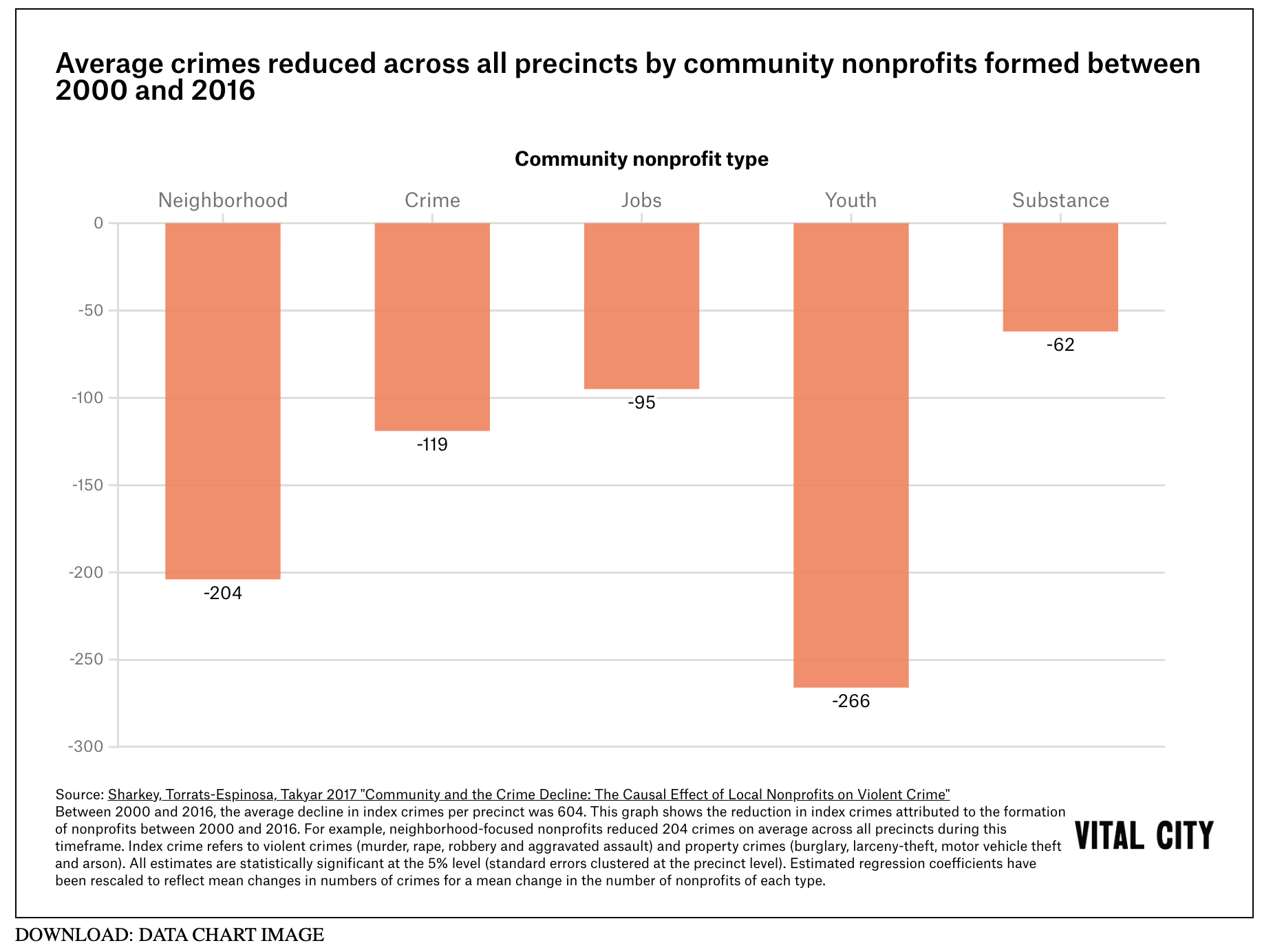Ideas in Action: More Non-Profits, Fewer Crimes
By Michael Jacobson, Executive Director, ISLG, and Gerard Torrats-Espinosa, Assistant Professor of Sociology at Columbia University and a member of the Data Science Institute, also at Columbia
The following is an excerpt from an article originally posted on Vital City.
For decades, the United States’ crime-control strategy has been built mainly on policing. While this model has been credited with creating safer communities, high-profile incidents of police violence, such as the killings of Michael Brown, Eric Garner and George Floyd, along with a growing body of evidence showing large racial disparities in police contact and misconduct, have led many scholars, policymakers and activists to question the ethical and public health implications of the approach.
Can other approaches create safer communities, while avoiding some of the harms of policing? Recent studies have provided support for the notion that the existence or strengthening of nonprofit neighborhood organizations — whether or not they are directly aimed at reducing violence — can have a dramatic effect, particularly on homicides.


